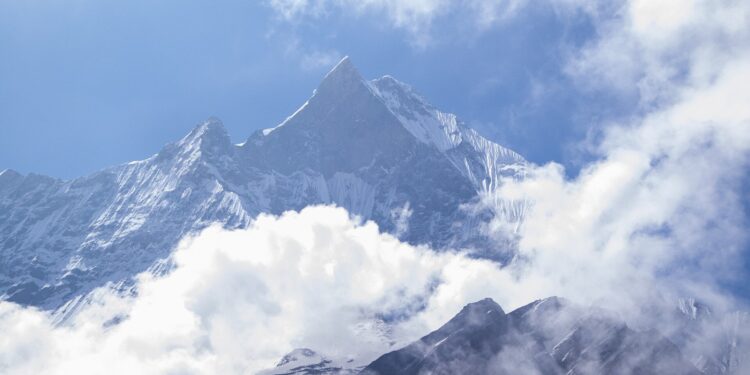Credit: Pixabay/CC0 Public domain
Mount Everest is about 15 to 50 meters higher than it otherwise would be due to uplift caused by erosion of a nearby river gorge, and continues to grow because of it, according to a new study by researchers. researchers from UCL.
The study, published in Natural geosciencesdiscovered that erosion of a river system located about 75 kilometers from Mount Everest is carving a major gorge. The loss of this landmass is causing the mountain to rise up to 2 millimeters per year and has already increased its height by 15 to 50 meters over the past 89,000 years.
At 8,849 meters above sea level, Mount Everest, also known as Chomolungma in Tibetan or Sagarmāthā in Nepali, is the highest mountain on the planet and rises approximately 250 meters above the next highest summit of the Himalayas. Everest is considered unusually high for the mountain range, as the next three highest peaks – K2, Kangchenjunga and Lhotse – all differ by only about 120 meters from each other.
A significant part of this anomaly can be explained by an uplift force caused by pressure exerted beneath the Earth’s crust after a nearby river eroded a significant amount of rock and soil. This is an effect called isostatic rebound, in which a section of the Earth’s crust that is losing mass flexes and “floats” upward because the intense pressure of the liquid mantle below is greater than the force of gravity downward after mass loss.
This is a gradual process, usually taking only a few millimeters per year, but over geological periods can make a significant difference to the Earth’s surface.
Researchers found that through this process, Mount Everest has grown by about 15 to 50 meters over the past 89,000 years, since the nearby Arun River merged with the adjacent river system. from Kosi.
Co-author, Ph.D. student Adam Smith (UCL Earth Sciences) said: “Mount Everest is a remarkable mountain of myth and legend and it continues to grow. Our research shows that as the nearby river system sinks deeper, the loss of material causes the mountain to surge higher. “.
Today, the Arun River flows east of Mount Everest and merges downstream with the larger Kosi river system. Over the millennia, the Arun has carved a major gorge along its banks, carrying away billions of tons of earth and sediment.
Co-author Dr Jin-Gen Dai from China University of Geosciences said: “An interesting river system exists in the Everest region. The upstream Arun River flows east at high altitude with a flat valley. The Kosi River drops in altitude and becomes steeper. This unique topography, indicative of an unstable state, is probably linked to the extreme height of Everest.
The uprising is not limited to Mount Everest and is affecting neighboring peaks, including Lhotse and Makalu, the fourth and fifth highest peaks in the world, respectively. Isostatic rebound increases the height of these peaks by a similar amount to Everest, although Makalu, located closest to the Arun River, would experience a slightly higher rate of uplift.
Co-author Dr Matthew Fox (UCL Earth Sciences) said: “Mount Everest and its neighboring peaks are growing because isostatic rebound is causing them to rise faster than erosion is wearing them away. We can see them growing about two millimeters per year. using GPS instruments and now we understand better what motivates it.
By examining the erosion rates of the Arun, Kosi and other rivers in the region, researchers were able to determine that around 89,000 years ago the Arun River joined and merged with the river system of Kosi, a process called drainage piracy.
In doing so, more water was channeled into the Kosi River, increasing its erosive power and carrying with it more soil and sediment from the landscape. With more of the land washed away, this triggered an increased rate of uplift, pushing mountain peaks higher and higher.
Lead author Dr Xu Han from China University of Geosciences, who carried out the work during a China Scholarship Council research visit to UCL, said: “The changing height of Mount Everest really puts highlight the dynamic nature of the Earth’s surface. Erosion of the Arun River and upward pressure from the Earth’s mantle give Mount Everest a boost, pushing it higher than it would otherwise be.
More information:
Jin-Gen Dai, Recent Chomolungma uprising reinforced by river drainage piracy, Natural geosciences (2024). DOI: 10.1038/s41561-024-01535-w. www.nature.com/articles/s41561-024-01535-w
Provided by University College London
Quote: A river pushes the summit of Mount Everest (September 30, 2024) retrieved September 30, 2024 from
This document is subject to copyright. Except for fair use for private study or research purposes, no part may be reproduced without written permission. The content is provided for informational purposes only.



